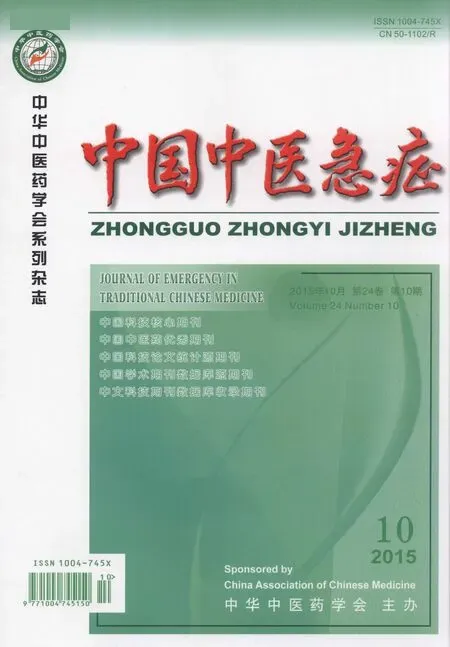小鼠椎间盘退变模型的构建策略*
劳杨骏徐涛涛杨笑奇吴承亮
(1.浙江中医药大学骨伤研究所,浙江杭州310053;2.浙江中医药大学附属第一医院,浙江杭州310053;3.浙江省骨伤研究所,浙江杭州310053;4.浙江中医药大学第一临床医学院,浙江杭州310053)
·综述·
小鼠椎间盘退变模型的构建策略*
劳杨骏1,3,4徐涛涛1,3,4杨笑奇2,4吴承亮1,3△
(1.浙江中医药大学骨伤研究所,浙江杭州310053;2.浙江中医药大学附属第一医院,浙江杭州310053;3.浙江省骨伤研究所,浙江杭州310053;4.浙江中医药大学第一临床医学院,浙江杭州310053)
椎间盘退变模型构建动物实验
椎间盘退变是临床上造成腰腿痛的主要原因[1],由于目前其发病机制尚未阐明,临床上的治疗手段相对单一,治疗效果不甚理想。动物模型是为生物医学研究和阐明人类疾病的病因、病机和探寻治疗方法而制作的实验动物。目前,能准确模拟人类椎间盘退变的动物模型尚不多见,选择和建立一种理想的椎间盘退变动物模型是研究其发病机制的关键。
小鼠是品种最多,用途最广,研究最详尽的实验动物,拥有生长周期短,饲养管理方便,容易达到标准化等特点。理想的腰椎间盘退变及突出的动物模型应包括以下几个方面:1)能再现椎间盘退变及突出的病理变化过程;2)有良好的可重复性;3)拥有较高的造模成功率;4)所选动物的解剖生理特点尽可能与人类接近。与此同时,还应考虑实验周期以及可操作性、经济性等因素。另外,已有研究表明,小鼠腰椎和尾椎椎间盘与人类椎间盘结构最为相似[1],力学特性最为相似[2],从准确易用的角度来讲,小鼠是一种理想的用于椎间盘退变相关研究的模型动物。
1 椎间盘退变发生的原因
人类椎间盘是由外周的纤维环、中央的髓核和上下软骨终板构成的。纤维环由同心胶原纤维层组成,每层内胶原平行排列,间层纤维交错排列,与椎间盘平面呈30°夹角,外层纤维环主要是Ⅰ型胶原组成,向内提供约束力;纤维环内是透明凝胶状的髓核,主要是由Ⅱ型胶原和聚集蛋白聚糖构成,这保证了髓核的高含水量,从而抵抗脊柱轴向负载。正常成人的椎间盘没有血管分布,是全身最大的无血供器官,新陈代谢主要依靠扩散作用与软骨终板的毛细血管床完成物质交换,因此极容易发生退变。
引起椎间盘退变的原因可分为基因因素和环境因素。基因因素是由于等位基因的多态性,造成了不同个体间的表现差异,导致相应功能紊乱,从而引起椎间盘退变的发生[3]。环境因素主要是指某些个体生活或工作的环境对其椎间盘造成的影响,如:长期抬举重物[4]、长时间驾驶[5]、椎间盘损伤[6]、缺乏体育锻炼[7]、长期吸烟[4-5,8-9]等因素。总的来看,人类椎间盘退变发生的原因有:脊柱纵向应力改变;物理性损伤;椎间盘自身代谢紊乱;基因多态性。因此在构建动物模型时,也应紧紧围绕以上几点进行动物模型的构建。
2 常见的退变模型
2.1应力改变型椎间盘退变模型应力改变模型的建立常常通过改变小鼠的体态或活动方式,使其脊柱特定节段椎间盘受力方式或大小发生改变,从而导致椎间盘退变的发生。Lotz等[10]发现持续地脊柱非生理性负载造成椎间盘细胞的死亡。Court等[11]通过对小鼠尾部椎间盘施加异常弯曲应力,发现增强的弯曲应力造成纤维环细胞的死亡,聚集蛋白聚糖表达减少。Arigga等[12]研究发现静态的力学刺激造成小鼠离体培养的椎间盘细胞凋亡。Hsieh等[13]发现持续的力学负载诱导金属基质蛋白酶2的激活,从而使椎间盘基质降解,促使椎间盘退变的发生。Court等[14]采用两根钢针分别钻入小鼠第9、第10尾椎,并用采用自制的可调节夹子,使其固定在一个特定的角度,造成异常的力学负载。Papuaa等[15]在小鼠第7、第10尾椎插入2枚0.028英寸的钛针,使相应的脊柱节段始终呈特定角度弯曲而造成椎间盘应力改变来得到椎间盘退变模型。最近,Sakai等[16]通过外科手术的方法,用0.8 mm的不锈钢丝将小鼠第5和第13尾椎固定起来,形成一个环,制成了一种新型的椎间盘退变的应力改变模型。该模型在同一只小鼠尾巴上可同时获得不同程度应力改变的椎间盘,大大减少了模型动物的使用量。小鼠尾椎间盘是一个本身在轴向并不受力的结构,而人类腰椎间盘却是负载着人类一部分体质量的重要结构。以上模型的建立都是通过对小鼠特定脊柱节段活动度的改变,使得椎间盘受到非生理的力学刺激,从而导致椎间盘退变的发生,能较成功地获得椎间盘退变模型。但是上述动物实验的研究者都是采用弯曲小鼠尾椎的方法来提供给椎间盘异常应力,而并没有真正提高两段椎骨间的轴向作用力,因此此类模型并不能很好地模拟人类椎间盘退变的发生发展过程。
2.2物理损伤型椎间盘退变模型针刺诱导椎间盘退变模型是主要物理损伤模型,通过对椎间盘的针刺,诱导椎间盘退变的发生。虽然多数研究者认为针刺椎间盘可建立较为理想的小鼠椎间盘退变模型[17-20],但是采用此方法获得模型的研究者较少,且小鼠椎间盘本身很小,在针刺过程中很难保证针刺的精度,且针刺是否可诱导椎间盘退变还存在着一定的分歧。为了验证针刺小鼠椎间盘会导致生物分子化学的改变,Yang等[21]采用31 G在显微镜下对小鼠尾椎间盘进行针刺,通过椎间盘高度、组织学分级、糖胺聚糖的定量分析,细胞外基质基因水平和蛋白水平的分析,发现其椎间盘的退变和人类椎间盘退变的方式存在一定的相似性,都存在短暂的从脊索细胞转化成软骨样细胞,最终转变为纤维软骨细胞的过程。有趣的是,Martin等[22]研究发现通过粗针头(26 G)对小鼠尾椎间盘的针刺,其力学特性立即改变,且在8周后椎间盘高度下降37%,髓核糖胺聚糖含量下降41%,髓核总胶原含量下降45%,而采用细针头(29 G)进行针刺的小鼠椎间盘却没有观察到显著的结构和成分变化,因此,他们认为只用细针头对椎间盘的针刺并不能导致椎间盘退变的发生。物理损伤型椎间盘退变模型,是模拟人类在日常活动中对椎间盘产生的各种微损伤,对于更大型的动物如大鼠、兔、犬来说比较合适,应用也比较广泛,但小鼠的椎间盘本身较小,针刺会直接导致其椎间盘结构的破坏,操作过程非常精细,且不能控制每一只小鼠针刺的位置和深度,模型可重复性较差。
2.3基因敲除模型近年来随着生物技术的发展,基因敲除技术在日常科研中的使用也越来越广泛。通过基因敲除技术建立的椎间盘退变小鼠模型在椎间盘退变的机制研究中逐渐被运用。就小鼠的体型来讲,通过手术等方法获得椎间盘退变模型数量少,偏差大,而基因敲除小鼠椎间盘模型具有数量多,可控性强等优点,其优势也逐步体现。目前报道的基因敲除椎间盘退变小鼠模型主要是对椎间盘的结构决定性相关基因敲除,如:Col9a1[23-24]、双糖链蛋白聚糖[25-26]、COL2[27]这些基因的缺失对软骨结构和功能造成直接损害从而诱导椎间盘退变的发生和发展;此外,也可通过对影响椎间盘正常代谢过程的相关基因进行敲除,如:核苷酸切除修复交叉互补基因[28-29]、骨保护素[30]、Smad3[31]、胰岛素样生长因子[32]、白细胞介素-1受体拮抗剂[33]等。利用基因工程获得的椎间盘模型可控性强、数量多、可稳定遗传,一旦模型可稳定持续地获得,对以后椎间盘退变相关机制和防治药物的研制和开发都有着非常积极的作用。虽然基因敲除小鼠有着非常广阔的应用前景,但是在获得敲除相关基因的纯合子动物之前,饲养动物和相关基因的鉴定需要花费大量的时间和精力,基因鉴定相关引物和试剂也是一笔巨大的开销。
3 讨论
人类是动物界唯一长期直立行走的动物,长期的直立行走导致脊柱受力的大小和方式不同于自然界中自身体重基本由四肢承担的的动物,这一点使得人类椎间盘更容易发生退变且更难在自然界中获得能够模拟人类椎间盘特征的动物模型。虽然脊柱的负载增加可能会导致椎间盘退变发生的风险增大,但是在研究宇航员椎间盘退变的高发病率时研究人员发现,处于微重力条件下的小鼠椎间盘糖胺聚糖的合成减少,金属基质蛋白酶-3合成增加,椎间盘细胞凋亡增加,表明处于微重力条件下可能会诱导椎间盘退变的发生[34]。在15 d的航天飞行后,可以观察到小鼠椎间盘高度的下降和力学性能的降低[35]。这说明脊柱的负载同时也是一个维持椎间盘正常生理的重要因素,太大或者太小的负载都会导致椎间盘退变的发生。
与人类表现相同的是,老年小鼠椎间盘也出现椎间盘退变的表现。研究表明随着年龄的增加,小鼠椎间盘细胞合成蛋白多糖的能力下降[36],纤维蛋白的羰基化增加[37],造成纤维弹蛋白弹性丧失,单核细胞趋化蛋白和金属基质蛋白酶的表达增加[38],髓核祖细胞数目减少[39],髓核细胞的生成速度小于凋亡速度,造成椎间盘结构和功能逐渐丧失。同时,也有研究者为了模拟慢性吸烟人群,将小鼠暴露于可直接吸入香烟的环境中[40-41],检测到吸烟导致小鼠髓核细胞的衰老、聚集蛋白聚糖的裂解增加、蛋白聚糖合成减少等一系列椎间盘退变的表现。
临床上腰腿痛是常见的疾病,椎间盘退变是引起局部炎症、骨赘、椎管狭窄从而导致腰腿痛症状产生的主要原因,严重影响了一部分人的生活质量。目前对椎间盘退变产生的病因病机缺乏明确的认识。动物模型是现代科学研究中的重要方法和手段,有助于阐明椎间盘退变发生的病因及机理和研制相应的治疗手段。而值得注意的是,虽然上述模型均能在一定程度上模拟椎间盘退变的发生与发展,但都只是对单一因素进行研究,而在人类椎间盘退变的过程中,上述致病因素往往相互结合,致使椎间盘退变的变得复杂而多变。因此针对单一致病因素构建的椎间盘退变模型不能满足模拟人类复杂退变机制的要求,且目前尚未见能准确模拟人类椎间盘退变过程的动物模型。因此,在今后的科研中,应考虑多种机制的存在,建立多因素并存的椎间盘退变动物模型是将来椎间盘退变模型构建的方向。
[1]Millecamps M,Tajerian M,Naso L,et al.Lumbar intervertebral disc degeneration associated with axial and radiating low back pain in ageing SPARC-null mice[J].Pain,2012,153(6):1167-1179.
[2]Showalter BL,Beckstein JC,Martin JT,et al.Comparison of animal discs used in disc research to human lumbar disc:torsion mechanics and collagen content[J].Spine,2012,37(15):E900-907.
[3]Kepler CK,Ponnappan RK,Tannoury CA,et al.The molecular basis of intervertebral disc degeneration[J].The spine journal:official journal of the North American Spine Society,2013,13(3):318-330.
[4]Deyo RA,Bass JE.Lifestyle and low-back pain.The influence of smoking and obesity[J].Spine,1989,14(5):501-506.
[5]Kelsey JL,Githens PB,O′Conner T,et al.Acute prolapsed lumbar intervertebral disc.An epidemiologic study with special reference to driving automobiles and cigarette smoking[J]. Spine,1984,9(6):608-613.
[6]Videman T,Battie MC.The influence of occupation on lumbar degeneration[J].Spine,1999,24(11):1164-1168.
[7]Elfering A,Semmer N,Birkhofer D,et al.Risk factors for lumbar disc degeneration:a 5-year prospective MRI study in asymptomatic individuals[J].Spine,2002,27(2):125-134.
[8]Wang D,Nasto LA,Roughley P,et al.Spine degeneration in a murine model of chronic human tobacco smokers[J].Osteoarthritis and cartilage/OARS,Osteoarthritis Research Society,2012,20(8):896-905.
[9]Pye SR,Reid DM,Adams JE,et al.Influence of weight,body mass index and lifestyle factors on radiographic features of lumbar disc degeneration[J].Annals of the rheumatic diseases,2007,66(3):426-427.
[10]Lotz JC,Chin JR.Intervertebral disc cell death is dependent on the magnitude and duration of spinal loading[J].Spine,2000,25(12):1477-83.
[11]Court C,Colliou OK,Chin JR,et al.The effect of static in vivo bending on the murine intervertebral disc[J].The spine journal:official journal of the North American Spine Society,2001,1(4):239-45.
[12]Ariga K,Yonenobu K,Nakase T,et al.Mechanical stress-induced apoptosis of endplate chondrocytes in organ-cultured mouse intervertebral discs:an ex vivo study[J].Spine,2003,28(14):1528-33.
[13]Hsieh AH,Lotz JC.Prolonged spinal loading induces matrix metalloproteinase-2 activation in intervertebral discs[J]. Spine,2003,28(16):1781-8.
[14]Court C,Chin JR,Liebenberg E,et al.Biological and mechanical consequences of transient intervertebral disc bending[J].European spine journal:official publication of the European Spine Society,the European Spinal Deformity Society,and the European Section of the Cervical Spine Research Society,2007,16(11):1899-906.
[15]Papuga MO,Kwok E,You Z,et al.TNF is required for the induction but not the maintenance of compression-induced BME signals in murine tail vertebrae:limitations of anti-TNF therapy for degenerative disc disease[J].Journal of orthopaedic research:official publication of the Orthopaedic Research Society,2011,29(9):1367-1374.
[16]Sakai D,Nishimura K,Tanaka M,et al.Migration of bone marrow-derived cells for endogenous repair in a new tail-looping disc degeneration model in the mouse:a pilot study[J].The spine journal:official journal of the Noth American Spine Society,2015,15(6):1356-1365.
[17]Yang F,Leung VY,Luk KD,et al.Mesenchymal stem cells arrest intervertebral disc degeneration through chondrocytic differentiation and stimulation of endogenous cells[J].Molecular therapy:the journal of the American Society of Gene Therapy,2009,17(11):1959-1966.
[18]Tam V,Rogers I,Chan D,et al.A comparison of intravenous and intradiscal delivery of multipotential stem cells on the healing of injured intervertebral disk[J].Journal of orthopaedic research:official publication of the Orthopaedic Research Society,2014,32(6):819-825.
[19]Ohta R,Tanaka N,Nakanishi K,et al.Heme oxygenase-1 modulates degeneration of the intervertebral disc after puncture in Bach 1 deficient mice[J].European spine journal:official publication of the European Spine Society,the European Spinal Deformity Society,and the European Section of the Cervical Spine Research Society,2012,21(9):1748-1757.
[20]Liang H,Ma SY,Feng G,et al.Therapeutic effects of adenovirus-mediated growth and differentiation factor-5 in a mice disc degeneration model induced by annulus needle puncture[J].The spine journal:official journal of the North American Spine Society,2010,10(1):32-41.
[21]Yang F,Leung VY,Luk KD,et al.Injury-induced sequential transformation of notochordal nucleus pulposus to chondrogenic and fibrocartilaginous phenotype in the mouse[J].The Journal of pathology,2009,218(1):113-121.
[22]Martin JT,Gorth DJ,Beattie EE,et al.Needle puncture injury causes acute and long-term mechanical deficiency in a mouse model of intervertebral disc degeneration[J].Journal of orthopaedic research,official publication of the Orthopaedic Research Society,2013,31(8):1276-82.
[23]Boyd LM,Richardson WJ,Allen KD,et al.Early-onset degeneration of the intervertebral disc and vertebral end plate in mice deficient in typeⅨcollagen[J].Arthritis and rheu-matism,2008,58(1):164-71.
[24]Allen KD,Griffin TM,Rodriguiz RM,et al.Decreased physical function and increased pain sensitivity in mice deficient for typeⅨcollagen[J].Arthritis and rheumatism,2009,60(9):2684-2693.
[25]Furukawa T,Ito K,Nuka S,et al.Absence of biglycan accelerates the degenerative process in mouse intervertebral disc[J].Spine,2009,34(25):E911-917.
[26]Marfia G,Campanella R,Navone SE,et al.Potential use of human adipose mesenchymal stromal cells for intervertebral disc regeneration:a preliminary study on biglycan-deficient murine model of chronic disc degeneration[J].Arthritis research&therapy,2014,16(5):457.
[27]Chen M,Li S,Xie W,et al.Col2CreER(T2),a mouse model for a chondrocyte-specific and inducible gene deletion[J]. European cells&materials,2014,28:236-245.
[28]Vo N,Seo HY,Robinson A,et al.Accelerated aging of intervertebral discs in a mouse model of progeria[J].Journal of orthopaedic research:official publication of the Orthopaedic Research Society,2010,28(12):1600-1607.
[29]Nasto LA,Robinson AR,Ngo K,et al.Mitochondrial-derived reactive oxygen species(ROS)play a causal role in aging-related intervertebral disc degeneration[J].Journal of orthopaedic research:official publication of the Orthopaedic Research Society,2013,31(7):1150-1157.
[30]Liang QQ,Li XF,Zhou Q,et al.The expression of osteoprotegerin is required for maintaining the intervertebral disc endplate of aged mice[J].Bone,2011,48(6):1362-1369.
[31]Li CG,Liang QQ,Zhou Q,et al.A continuous observation of the degenerative process in the intervertebral disc of Smad3 gene knock-out mice[J].Spine,2009,34(13):1363-1369.
[32]Li B,Zheng XF,Ni BB,et al.Reduced expression of insulinlike growth factor 1 receptor leads to accelerated intervertebral disc degeneration in mice[J].International journal of immunopathology and pharmacology,2013,26(2):337-347.
[33]Phillips KL,Jordan-Mahy N,Nicklin MJ,et al.Interleukin-1 receptor antagonist deficient mice provide insights into pathogenesis of human intervertebral disc degeneration[J].Annals of the rheumatic diseases,2013,72(11):1860-1867.
[34]Jin L,Feng G,Reames DL,et al.The effects of simulated microgravity on intervertebral disc degeneration[J].The spine journal:official journal of the North American Spine Society,2013,13(3):235-242.
[35]Bailey JF,Hargens AR,Cheng KK,et al.Effect of microgravity on the biomechanical properties of lumbar and caudal intervertebral discs in mice[J].Journal of biomechanics,2014,47(12):2983-2988.
[36]Venn G,Mason RM.Changes in mouse intervertebral-disc proteoglycan synthesis with age.Hereditary kyphoscoliosis is associated with elevated synthesis[J].The Biochemical journal,1986,234(2):475-479.
[37]Scharf B,Clement CC,Yodmuang S,et al.Age-related carbonylation of fibrocartilage structural proteins drives tissue degenerative modification[J].Chemistry&biology,2013,20(7):922-934.
[38]Fujita K,Ando T,Ohba T,et al.Age-related expression of MCP-1 and MMP-3 in mouse intervertebral disc in relation to TWEAK and TNF-alpha stimulation[J].Journalof orthopaedic research:official publication of the Orthopaedic Research Society,2012,30(4):599-605.
[39]Sakai D,Nakamura Y,Nakai T,et al.Exhaustion of nucleus pulposus progenitor cells with ageing and degeneration of the intervertebral disc[J].Nature communications,2012,3:1264.
[40]Wang D,Nasto LA,Roughley P,et al.Spine degeneration in a murine model of chronic human tobacco smokers[J].Osteoarthritis and cartilage/OARS,Osteoarthritis Research Society,2012,20(8):896-905.
[41]Nasto LA,Ngo K,Leme AS,et al.Investigating the role of DNA damage in tobacco smoking-induced spine degeneration[J].The spine journal:official journal of the North American Spine Society,2014,14(3):416-23.
R681.5+3
A
1004-745X(2015)10-1783-04
10.3969/j.issn.1004-745X.2015.10.032
2015-05-30)
国家自然科学基金资助项目(81273770);浙江省中西医结合骨关节病研究科技创新团队(2011R50022);浙江省骨关节疾病中医药干预技术研究重点实验室(2013E10024)
(电子邮箱:wu.cl@163.com)
·综述·

